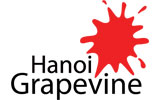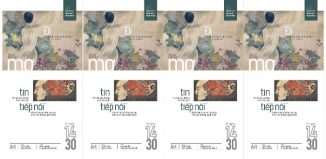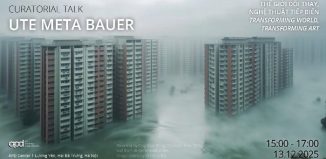HCMC – Art project “Zero-Tea-Station”
Sat 06 Nov 2010, 6 – 9 pm
Zero Station
From the organizer:
Zero Station is pleased to introduce the art project Zero-Tea-Station by Thien Thu Binh, a student of urban infrastructure at the Ho Chi Minh City University of Architecture. A founding member of “Mo tra hoi,” (Loving tea group) a group of young people having tea as their common interest, Thien Thu Binh would like to use Zero Station to build a “station,” or a space for tea, and the incorporated tea ceremonies will become a “syntax” for the real interactive space that he has designed to generate communication and knowledge for society.
The project’s structure is as follows:
Thien Thu Binh has transformed the entire physical space of Zero Station into an “exclusive” area for tea, with Zero Station’s lobby equipped with a hand-wash basin for the project’s guests, and its exhibition area designed as a room for tea, both green and black ones.
Guests coming to drink tea shall include people that Thien Thu Binh himself has invited, as well as passers-by.
What is interesting is that everything within the space created by Thien Thu Binh has its own use value and indeed, it includes the items used for tea making and drinking, or simply for relaxation. The nothing-to-see nature of this project releases the exhibitive quality, or symbolism, of an exhibition or artistic space. In fact, it has been made a new kind of space—one to be utilized and serve social interactions.
It is here that Thien Thu Binh helps bur the boundary between art, culture and the everyday life, turning the symbolic into the direct, and the metaphor into the surface. This very act of Thien Thu Binh has virtually effaced the concept of “viewing”—one that is objective and based on the aesthetic or anti-aesthetic evolution of traditional audiences of art—so as to create a new environment of participation for all involved.
Guests to Thien Thu Binh’s project can choose to join the tea table led by him and start a conversation, or drink tea while enjoying silence, or go out to the green-tea space, listen to music and have a small discussion among themselves.
What visitors can have from the project would not be an aesthetic or anti-aesthetic experience arranged for their artistic ego. Instead, they will be given the conditions for their physical bodies to rest—while active—and to get engaged in a social communication environment. In other words, they may get actual living experience in a social communication space that exists, for real.
The approach used by Thien Thu Binh, from the perspective of art theory, bears strong resemblance to the so-called “relational aesthetics,” an art mode most widely discussed by French critic Nicolas Bourriaud.
In his definition, relational art is “a set of artistic practices which take as their theoretical and practical point of departure the whole of human relations and their social context, rather than an independent and private space” (Bourriaud 1998, p. 113).
Art pieces resulted from this tendency create a social space where people can get involved in one common act. Bourriaud thus reckons that “the role of artworks is no longer to form imaginary and utopian realities, but to actually be ways of living and models of action within the existing real, whatever scale chosen by the artist” (1998, p. 13).
![]()
| Zerostation 91A Dinh Tien Hoang, Binh Thanh District, HCMC [email protected] |













